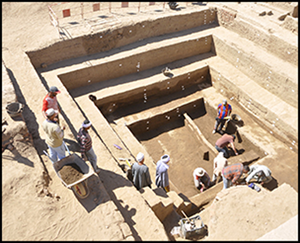Published online by Cambridge University Press: 10 June 2021

Following two centuries of research at Karnak, our understanding of the origins and development of this famous ancient Egyptian temple complex remains limited. Recent archaeological excavation in the Ptah temple, however, has reached its earliest levels, providing a first, securely dated stratigraphic sequence. Despite flood risks, the development of the religious complex c. 2200–2000 BC was made possible by the retreating Nile riverbank. Thus, the river and the expanding Karnak temple complex played major roles in the takeover of Egypt by the Eleventh Dynasty rulers and the growth of the new capital at Thebes, a potent combination of forces—fluvial, religious and secular—encountered among other early state powers.